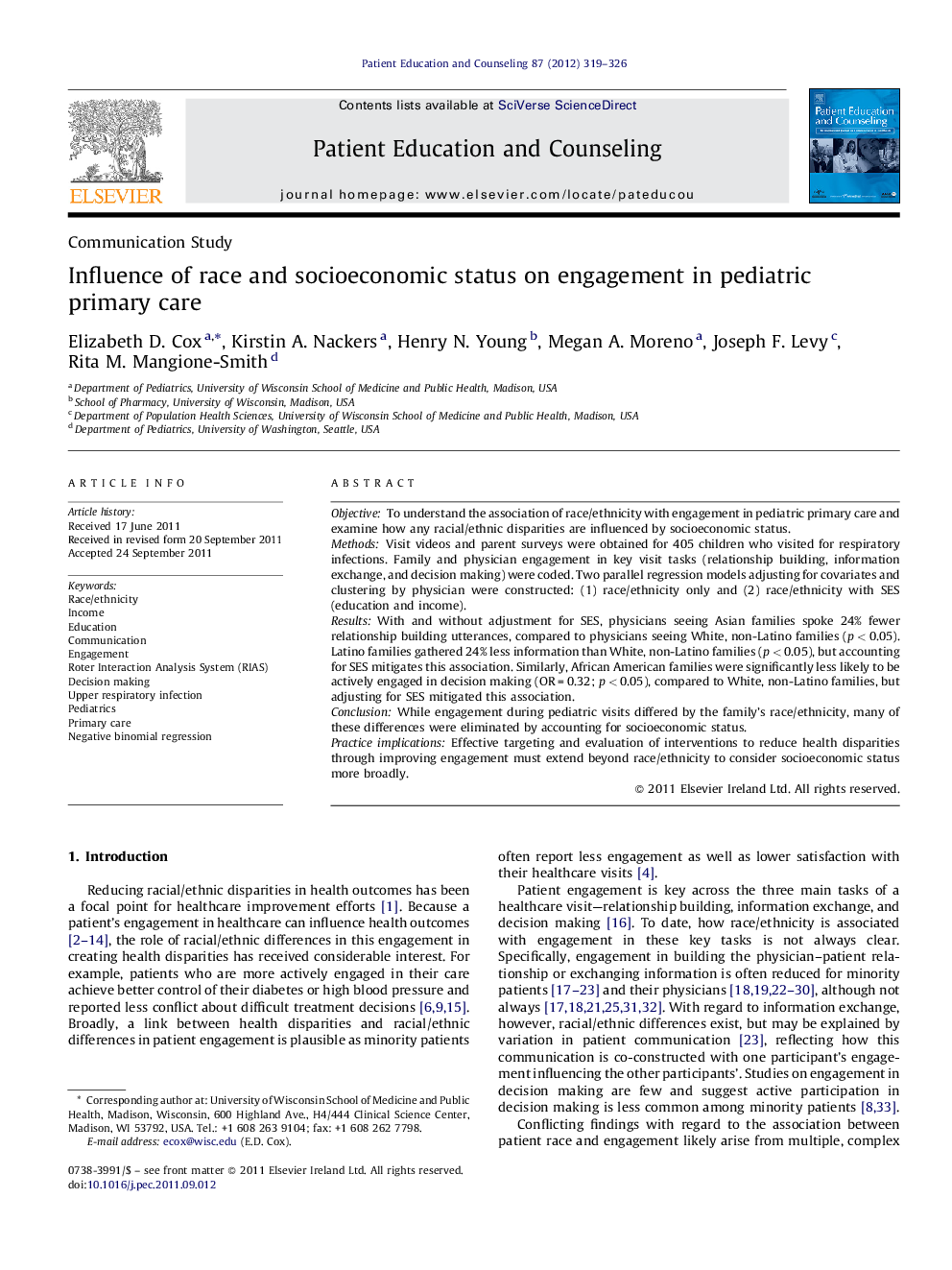| Article ID | Journal | Published Year | Pages | File Type |
|---|---|---|---|---|
| 6154186 | Patient Education and Counseling | 2012 | 8 Pages |
ObjectiveTo understand the association of race/ethnicity with engagement in pediatric primary care and examine how any racial/ethnic disparities are influenced by socioeconomic status.MethodsVisit videos and parent surveys were obtained for 405 children who visited for respiratory infections. Family and physician engagement in key visit tasks (relationship building, information exchange, and decision making) were coded. Two parallel regression models adjusting for covariates and clustering by physician were constructed: (1) race/ethnicity only and (2) race/ethnicity with SES (education and income).ResultsWith and without adjustment for SES, physicians seeing Asian families spoke 24% fewer relationship building utterances, compared to physicians seeing White, non-Latino families (p < 0.05). Latino families gathered 24% less information than White, non-Latino families (p < 0.05), but accounting for SES mitigates this association. Similarly, African American families were significantly less likely to be actively engaged in decision making (OR = 0.32; p < 0.05), compared to White, non-Latino families, but adjusting for SES mitigated this association.ConclusionWhile engagement during pediatric visits differed by the family's race/ethnicity, many of these differences were eliminated by accounting for socioeconomic status.Practice implicationsEffective targeting and evaluation of interventions to reduce health disparities through improving engagement must extend beyond race/ethnicity to consider socioeconomic status more broadly.
